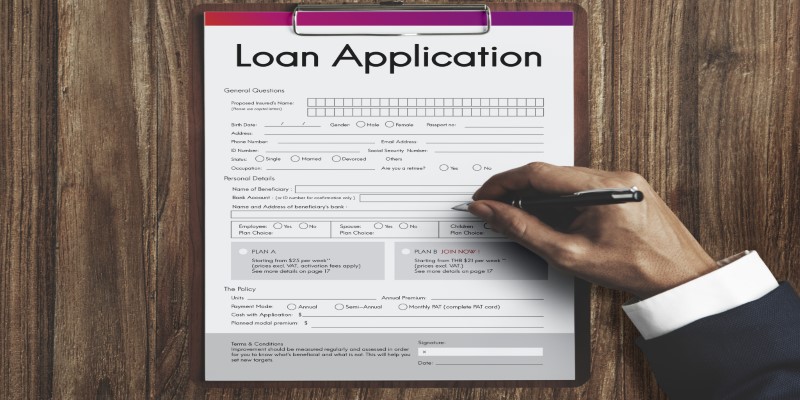Your Step-by-Step Guide to Getting a Personal Loan
Sometimes, unexpected expenses arise, or you may need funds for debt consolidation or a major purchase. A personal loan can provide quick financial relief, offering a lump sum that you repay in fixed installments with interest. Unlike mortgages or car loans, most personal loans are unsecured, meaning you don't need to put up collateral. This makes them a convenient option for many borrowers.
However, approval depends on factors like your income, credit score, and debt-to-income ratio. Understanding how the process works—from checking your credit score to comparing lenders and applying—can help you secure a good loan while avoiding unnecessary financial strain. So, let's break it all down.
Understanding Personal Loans
A personal loan is an installment loan that gives you a one-time sum of money that you pay back in monthly payments over a specific amount of time. Such loans are often unsecured, so you do not have to give any assets as collateral. Nevertheless, lenders consider your creditworthiness to see if you qualify and with what interest rate.
The rates of interest on personal loans depend on your credit score, income, and debt-to-income ratio. If you have good credit, you can get a low rate. If your credit score is bad, you may receive high rates or may not be approved. Banks, credit unions, and online lenders offer personal loans, each with varying requirements and terms.
Steps to Taking Out a Personal Loan
Taking out a personal loan is not simply applying for one. It takes planning, awareness of your finances, and comprehension of the terms to make an informed decision. Here's a step-by-step process to assist you in smoothly navigating it.
Check Your Credit Score and Financial Health
Before applying for a loan, take a look at your credit score. The lenders apply this when evaluating you as a risk to borrow from. You will get good interest rates if you have a good credit score, while with a low one, you can expect increased expenses or outright denial. Your credit report can be reviewed free of charge via key credit bureaus.

In addition to your credit score, evaluate your overall financial situation. Calculate your monthly income and expenses to determine how much you can afford to borrow and repay. Lenders will also look at your debt-to-income ratio (DTI), which measures how much of your income goes toward existing debts. Keeping your DTI below 36% improves your chances of loan approval.
Compare Lenders and Loan Offers
Not all personal loans are the same. Different lenders offer different interest rates, repayment terms, and fees. It’s essential to shop around and compare multiple offers before making a decision. Banks and credit unions may offer competitive rates to existing customers, while online lenders often provide faster approval processes and flexible requirements.
When comparing loan offers, pay attention to the annual percentage rate (APR), which includes both interest and fees. Some lenders charge origination fees, which are deducted from your loan amount before you receive the funds. Make sure to read the fine print and understand all potential costs before committing.
Determine How Much You Need to Borrow
It might be tempting to borrow more than you need, but this can lead to unnecessary debt. Before applying, calculate the exact amount required for your purpose—whether it’s covering medical bills, home repairs, or consolidating debt. Taking out a larger loan means higher monthly payments and more interest over time. Borrow only what you can comfortably repay.
Gather Required Documents
To speed up the loan application process, gather the necessary documents in advance. Lenders typically require proof of identity (such as a passport or driver’s license), proof of income (pay stubs or tax returns), and proof of residence (utility bills or rental agreements). If you’re self-employed, you may need to provide additional financial statements.
Submit Your Loan Application
Once you’ve chosen a lender and prepared your documents, it’s time to submit your application. Many lenders allow you to apply online, while some banks and credit unions may require in-person visits. The application will ask for details about your income, employment, and the loan amount you’re requesting.
After you submit your application, the lender will review your credit history, income, and other financial details to determine whether you qualify. Depending on the lender, this process may take a few minutes to several days.
Review and Accept the Loan Offer
If your loan application is approved, the lender will present you with a loan offer outlining the interest rate, repayment term, and monthly payment. Take the time to read the terms carefully. Look out for hidden fees, prepayment penalties, or conditions that could affect your ability to repay the loan.

If everything looks good, accept the offer, and the lender will disburse the funds. Some lenders deposit the money into your bank account within a day, while others may take longer. Once you receive the funds, it’s up to you to use them responsibly and stick to your repayment schedule.
Repay Your Loan on Time
Repaying your loan on time is crucial to maintaining a good credit score and avoiding late fees. Setting up automatic payments can help ensure you never miss a due date. If possible, consider paying more than the minimum amount to reduce interest costs and pay off your debt faster.
If you ever face difficulty making payments, contact your lender immediately. Some lenders offer hardship programs or flexible repayment options to help borrowers in financial trouble. Ignoring missed payments can lead to penalties, increased interest rates, and damage to your credit score.
Conclusion
Taking out a personal loan is straightforward, but it requires careful planning and financial awareness. By checking your credit score, comparing lenders, and understanding the terms, you can secure a loan that meets your needs without falling into unnecessary debt. Always borrow responsibly, make payments on time, and be mindful of the total cost of borrowing. Whether you need a loan for an emergency, a major expense, or debt consolidation, making informed decisions can help you stay in control of your finances.











